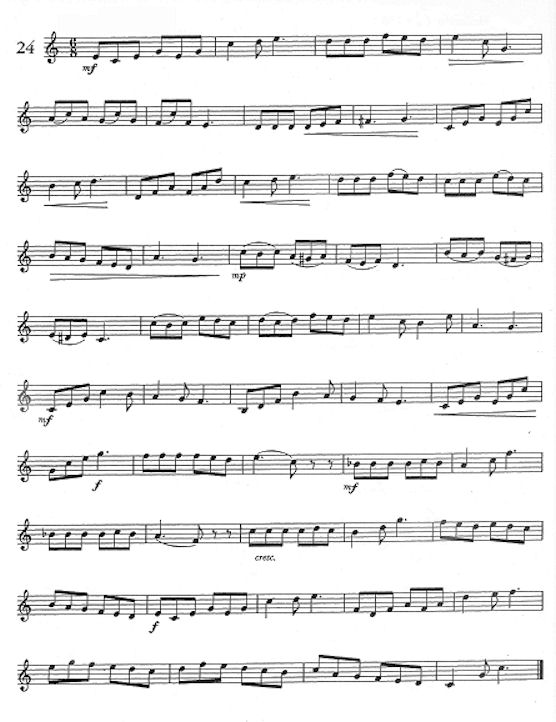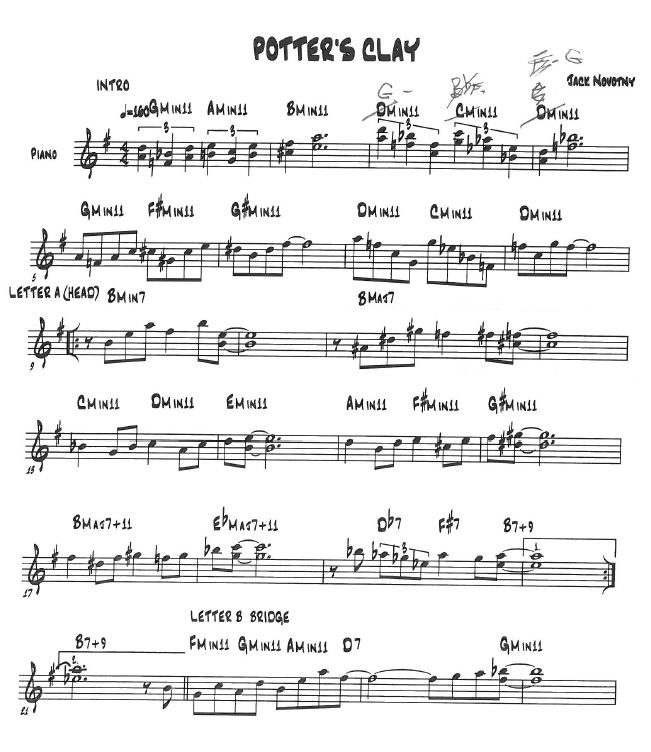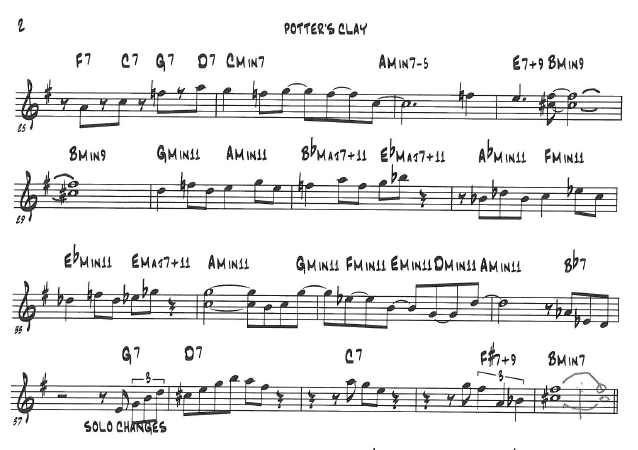Try this 6/8 exercise, at 100 bpm. If you got it, then try it at 120! (it's not as easy as you think!)
-
EDIT:... Sorry, I cut off the bottom section. I re-uploaded the file...
Play this...

-
That's just a "Sousa" march!!!




-
Challenge accepted and task accomplished. Now back at cha'. This exercise reminded me of a piece in our quintet's song book called "Potter's Clay". Yep, this is what the band throws at me and I have to work with on a daily basis. So give this a try, and oh, by the way, the part is written for C instruments, so your task is to not only play it, but to transpose it as you play. That's the way I play from our song book which NO ONE in the band writes for Bb instruments. Oh yeah, the tempo is at 162. Let me know how it goes:


-
Whoa... I'll play "Potter's Clay" on my mandolin or my grandmother's heirloom violin, but I don't know about trumpet!!

-
. . . and playing those first four measures in multiphonics is a bitch.

-
@ButchA said in Try this 6/8 exercise, at 100 bpm. If you got it, then try it at 120! (it's not as easy as you think!):
Whoa... I'll play "Potter's Clay" on my mandolin or my grandmother's heirloom violin, but I don't know about trumpet!!

ButchA, thanks for posting your initial exercise. I followed with the reply I chose to illustrate a point that these exercises are very useful and they prepare an individual toward integrating such exercises into the future performances. I found that all those years of working through rudimentary exercises really helped me in using the concepts, finger memory and rhythm approaches to these patterns that serve to enhance improvisational performance. Using patterns such as the one you illustrated has helped me identify my voice as a jazz improvisational artist.
All those years of working through the painful rudiment work books has paid off in spades in preparing me to be the quality musician that am am today, many many years later. Exercises such has these have helped me to make it through tunes such as "Potters Clay" that is now demanded of me in my professional career as a musician. I might add, those two years I studied with Mick Denneson who had really inflicted pain in making me work through that transposition etude book paid off as well!
-
@Dr-GO when does the trumpet come in?
-
@ButchA said in Try this 6/8 exercise, at 100 bpm. If you got it, then try it at 120! (it's not as easy as you think!):
EDIT:... Sorry, I cut off the bottom section. I re-uploaded the file...
Play this...

No "stinger" but if an ensemble was playing it, someone would!!




-
@BigDub said in Try this 6/8 exercise, at 100 bpm. If you got it, then try it at 120! (it's not as easy as you think!):
@Dr-GO when does the trumpet come in?
It plays the entire time. Lower harmony.